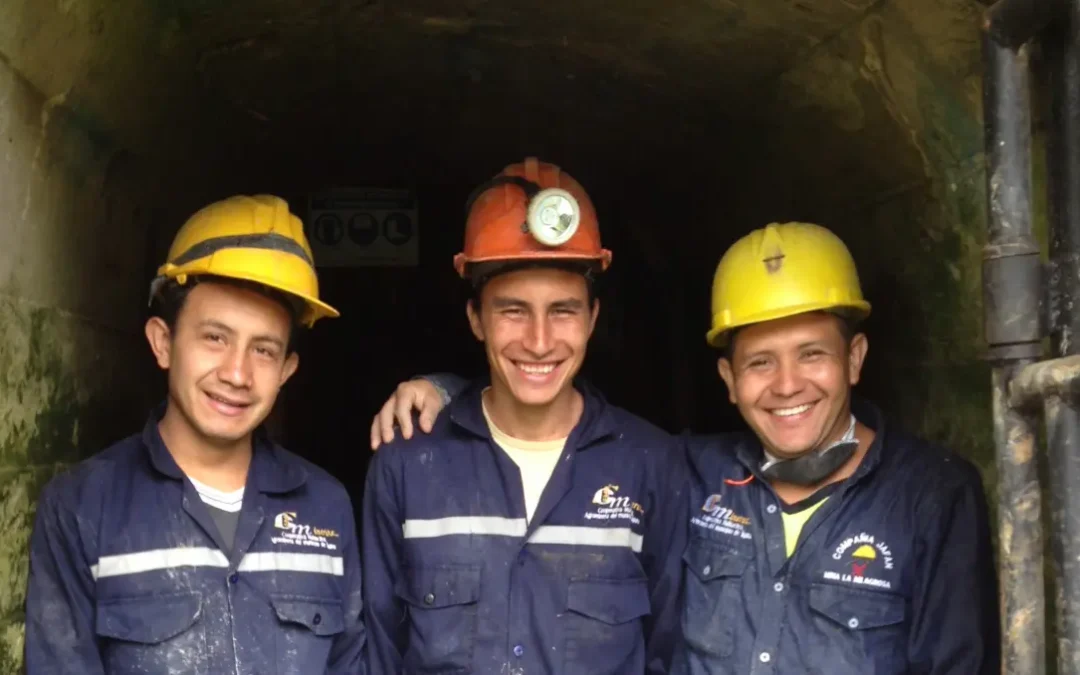The miners are the driving force behind this supply chain. In the jewelry industry, it is quite rare to highlight mining. Instead, there has been a significant effort to keep this crucial and important aspect of jewelry production from being showcased.
It all begins when a company’s leadership recognizes the importance of traceability and understands how their decisions can impact the lives of those further down the supply chain. Adopting this people-first mindset leads to the best decisions. In 2018, Samler Husset and D&M Jewelers acknowledged the significance of traceability and social impact. They began researching traceable sources for their gold, only to find that none of the existing gold refineries could guarantee this. The only standards available on the market that could ensure traceability were Fairmined and Fairtrade.
There are three strategies that a company’s leadership can adopt to ensure their supply chain sources traceable gold. The first approach responds to informed consumer demand for traceability and a 100% assurance that the gold was obtained legally, necessitating complete traceability. While consumers currently lack comprehensive information about the gold supply chain, awareness is improving daily. The second approach centers on the leadership’s concern for ensuring that their customers are not inadvertently funding illicit operations involving child labor and the use of mercury in illegal gold extraction. The only standards that can guarantee this are Fairmined and Fairtrade.
Other well-known programs in the industry, such as RJC, RMI, and LBMA, are superficial. They only conduct KYC (Know Your Customer) checks on their immediate suppliers and cannot guarantee anything beyond the scope of the direct supplier to the refinery. Therefore, there is no assurance that child labor or mercury was not used in the manufacturing process of their so-called recycled gold, making their claims essentially fraudulent.
The third approach is fraudulent. Those conducting business—who cannot be considered true leaders—are fully aware of their entire supply chain and the risks associated with sourcing gold of indeterminate origin, such as recycled gold. Yet, they persist in marketing their gold as traceable, ethical, and responsible. Any claims regarding gold that cannot be traced are fraudulent. They even go so far as to place this misleading information on sophisticated blockchain initiatives, falsely claiming that their recycled gold was sourced from a gold refinery, conveniently omitting the pawn shops and cash-for-gold schemes where this so-called recycled gold actually comes from. There is even a type of recycled gold that has never been in the hands of a consumer but is still labeled as recycled gold; this is artificially created by jewelry and watch manufacturers and constitutes direct gold laundering.
All brands participating in Fairmined understand the significant impact their decisions have on the lives of people at the origin of the supply chain. With Fairmined certified gold, brands can ensure that miners work under safe and fair conditions, that child labor is not involved, and that no mercury is used in the mining operations. These assurances cannot be made with recycled gold, as it is impossible to determine the conditions under which the gold was originally mined, whether child labor was used, or if mercury was involved.
The people-first principles of the Fairmined standard ensure that valuable resources from consumers in developed nations reach the most remote mining regions of Colombia. Guided by the Fairmined standard, fair wages are paid, and various social safety nets are provided for workers in Fairmined certified mines. These benefits include comprehensive health coverage for workers and their families, pension contributions, paid vacations, severance pay, obligatory savings programs in case of layoffs, and family compensation funds. The Fairmined standard guarantees that these obligations are met, with the entire process audited by an external third party.
Slowing down production and ensuring the segregation of Fairmined gold is a complex task that many gold refineries either don’t want to undertake or don’t fully understand. That’s where Fairalloy steps in. We recognize the importance of traceability and maintaining the critical segregation principle, ensuring that no other gold sources are mixed with Fairmined gold. We guarantee that the Fairmined gold our customers purchase is truly from a specific Fairmined certified mine. In 2019, we began structuring our GPC project, and by 2020, we successfully exported the first traceable gold potassium cyanide in the world from mine to manufacturer. Since then, over 40 brands have adopted the Fairmined standard for exclusively plating their jewelry collections with Fairmined gold.
It might seem that simply channeling resources could resolve issues in these remote mining regions, but this is far from the truth. In Colombia, we’ve witnessed the aftermath of European refineries attempting to buy gold from artisanal miners by funneling large amounts of resources, financing numerous illicit activities. Paperwork fraud was widespread, and only a few members of terrorist groups controlled the flow of illicit money. Illegally sourced gold from medium to large-scale illicit actors ended up laundered as gold from panners. This is why Fairmined certified gold is so valuable. Every gram is meticulously tracked, ensuring it is mined with the utmost respect for the miners, their communities, and the environment.
As a brand, it is imperative to make confident claims that cannot be easily debunked. This starts with traceability. When a brand can confidently trace the origin of their gold, they establish a solid foundation for asserting any social or environmental claims with pride. This allows the marketing team to communicate these claims coherently and honestly. People-first principles are essential for driving change in an industry where traceability is often a luxury and false narratives are quickly exposed.

